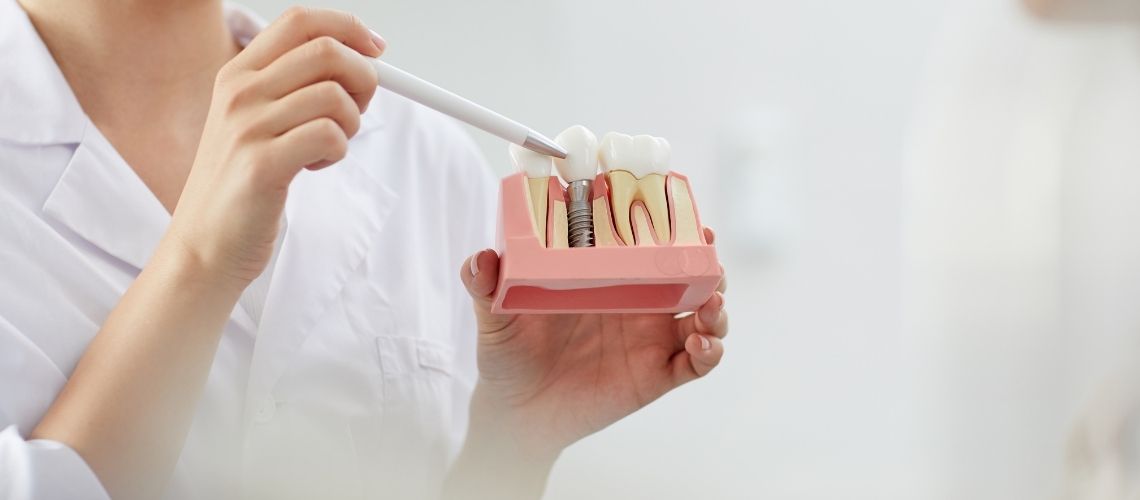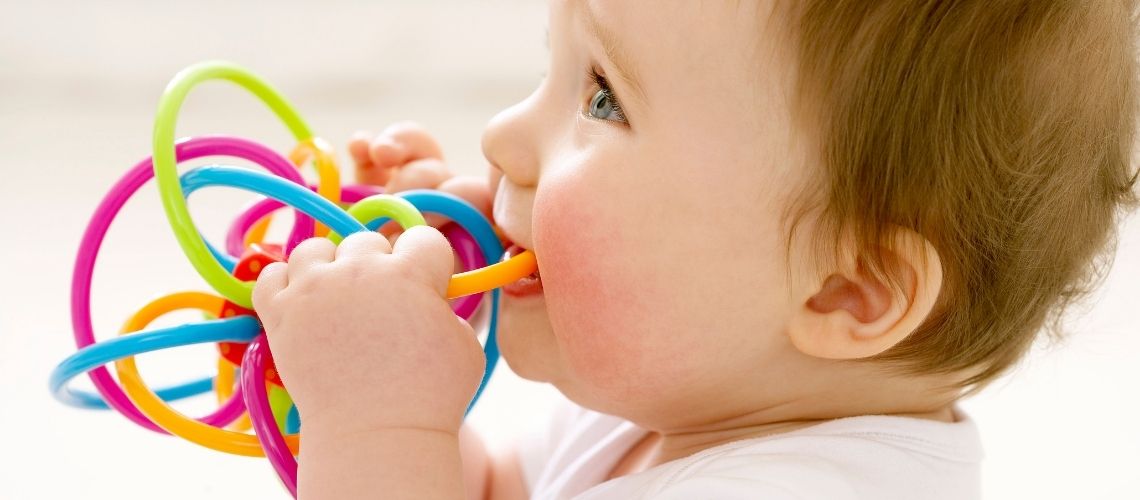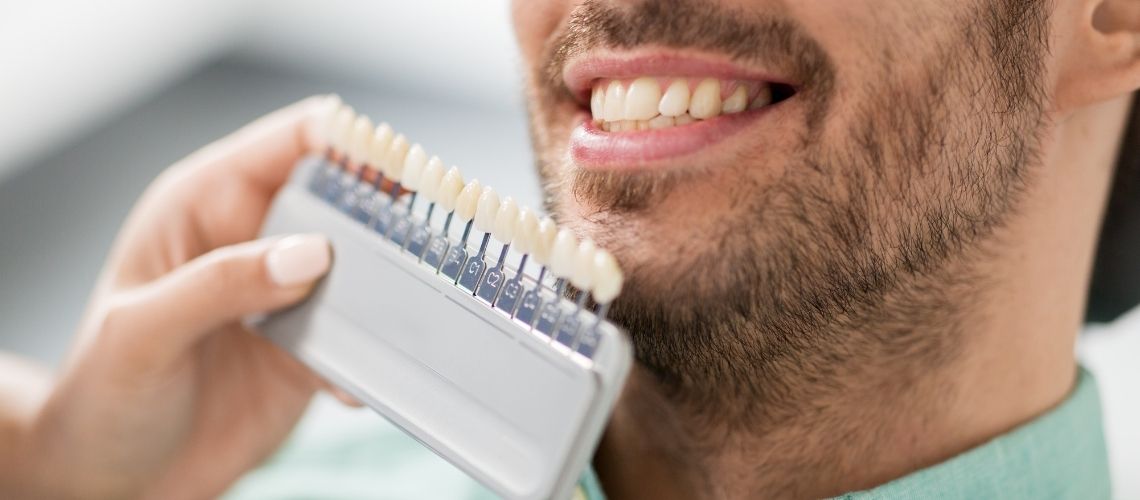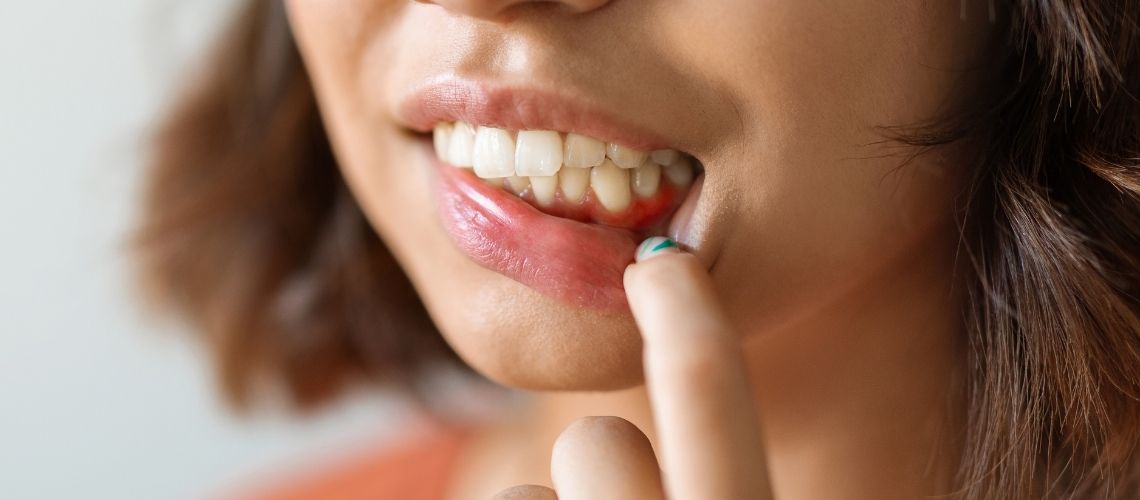Temporary teeth are a temporary solution for individuals who have lost teeth. These prosthetics not only provide an aesthetic appearance but also offer functional benefits. Typically made of plastic or metal frameworks, these artificial teeth temporarily replace missing teeth. Individuals use these prosthetics while permanent prosthetics are being prepared. They are an ideal option, especially for those who have recently lost teeth. Also known as immediate dentures, these temporary solutions are frequently recommended by dentists. Temporary teeth are indispensable for those who want to improve their dental aesthetics quickly.
Temporary Tooth Fixing with Orthodontic Wax
Orthodontic wax can be used to temporarily fill the space of missing teeth. This method provides a practical solution for those who cannot reach a dentist. White orthodontic wax is ideal for emergencies as it easily adheres to adjacent teeth. It can be shaped to fill the gap of the missing tooth. Its adhesive nature allows it to integrate with other teeth after application.
Application Process:
- Orthodontic wax should be applied to a clean and dry surface.
- A toothpick or wooden skewer is used for shaping.
- Once the desired form is achieved, it is adhered to adjacent teeth.
This method can easily deteriorate during eating and drinking. Additionally, it is sensitive to temperature changes and should not be considered a permanent solution. However, it is useful for quickly improving appearance and providing temporary relief in social situations.
The Importance of Temporary Tooth Replacement Kits
Temporary tooth replacement kits offer a practical solution for individuals who have lost teeth. Available at pharmacies, these kits are notable for their ease of use. The thermoplastic beads inside soften and become easily moldable when immersed in hot water. Individuals can heat and soften these beads, then shape them to fit their own tooth gaps. During the shaping process, the beads, due to their flexible nature, adapt to adjacent teeth. Temporary teeth made with these kits:
- Can be easily shaped when soft,
- Fill the gap with a natural tooth appearance,
- Lock into place by adapting to the form of adjacent teeth.
These features make them ideal for those who want to temporarily improve dental aesthetics in emergencies or until a permanent solution is found.
Temporary Solution in Your Medicine Cabinet: Over-the-Counter Temporary Denture Kits
Over-the-counter temporary denture kits offer a practical solution for individuals who have lost teeth. These kits provide an aesthetic appearance and can be easily applied at home. Made with thermoplastic material, these prosthetics harden easily when placed over natural teeth. Their semi-flexible nature allows users to easily adjust them to fit the teeth perfectly. Additionally, these prosthetics are quite easy to remove and reapply. Thus, users can repeat this process as needed. The kit typically includes:
- Thin coating strips: Cover the teeth and fill the gaps.
- Heatable and moldable pink gum material: For optional use.
- Scissors and file: To customize the prosthetic and fit the teeth.
Flipper: Temporary Removable Partial Denture
Among temporary tooth solutions, flipper dentures hold an important place. Especially in cases of single front tooth loss, these dentures meet both aesthetic and functional needs. The dentist takes measurements of the patient’s mouth to prepare a custom flipper. These prosthetics can be easily inserted and removed without damaging existing teeth.
- Material: Usually made of lightweight plastic material.
- Retentive Structure: Attached with minimal intervention to other teeth.
- Aesthetic: Provides a natural tooth appearance.
This temporary solution provides quick improvement in dental aesthetics. Additionally, using them during the preparation of permanent dental prosthetics allows the individual to continue their social life. It is necessary to avoid hard foods while using flipper dentures.
Immediate Temporary Dentures
Immediate temporary dentures play an important role in tooth loss situations. These dentures are available for use immediately after tooth extraction. They not only provide an aesthetic smile but also support speech and chewing functions. Dentists especially recommend these dentures when the remaining natural teeth are not supportive. Immediate dentures are a temporary solution and may become incompatible over time due to changes in the gum and bone tissue. Therefore, the usage period of the prosthetic is generally limited to eight to twelve months. Afterwards, it needs to be replaced with a more compatible and permanent prosthetic.
During this period, individuals:
- Gain an aesthetic appearance,
- Meet their functional needs,
- Generate financial resources for a permanent solution.
These dentures temporarily fulfill tooth functions while providing time for long-term planning.
The Functioning of Temporary Partial Dentures
Temporary partial dentures play a critical role in addressing tooth loss. These dentures are typically made of plastic or metal material. By filling the gaps in the mouth, they allow individuals to comfortably eat and speak in their daily lives. Dentists design these dentures to be used especially until permanent dentures are prepared.
- Material: Dentures have a pink base similar to the color of natural gums.
- Suitability: Suitable for patients with at least one natural tooth in the upper or lower jaw.
- Support: Sometimes crowns may be needed to ensure they grip without damaging the natural teeth.
The design of temporary dentures is customized according to the existing tooth structure of the patient. Dentists use various techniques to ensure the prosthetic fits naturally with the teeth. Among these, precision attachments hold a significant place. These attachments provide a more aesthetic appearance compared to traditional clasp systems and better fit the teeth.
The adaptation process of the prosthetic may vary depending on the patient’s oral structure. During this process, your dentist will make the necessary adjustments to ensure the prosthetic fits perfectly.
Patients may experience a short adaptation period after the prosthetic is placed in the mouth. However, this process provides temporary comfort until a permanent solution is found.
Steps of Applying Temporary Partial Dentures
The process of fitting temporary partial dentures begins with preparing the mouth. The dentist makes some preparations according to the condition of the existing teeth and gums. These preparations usually include:
- Tooth extraction,
- Reshaping the teeth,
- Bone grafting procedures if necessary.
After the preparation stage is completed, the dentist takes an impression to be used in the making of the prosthetic. This impression includes detailed measurements of both your gums and remaining teeth. Additionally, jaw measurements are taken to accurately evaluate the gaps. These measurements are critical to ensure the prosthetic fits perfectly in the mouth.
After the measurement and evaluation processes are completed, the dentist prepares the temporary partial denture. This prosthetic will be used until the permanent denture is completed. The usage period of the temporary prosthetic generally varies depending on the individual and the treatment process.
Fitting Process of Temporary Partial Dentures
The dentures typically consist of a plastic or metal framework. Your dentist will take impressions of your mouth to prepare these prosthetics specifically for you.
- Design and Production: The dentist takes a detailed impression of your mouth. The prosthetic is designed and produced based on this impression.
- Trial and Adjustment: Once your prosthetic is ready, the first trial is conducted. During this time, the dentist checks if the prosthetic fits your mouth properly. Necessary adjustments are made to ensure a perfect fit.
- Training and Adjustment: Instructions are provided on how to insert and remove the prosthetic. Additionally, recommendations are given to help you get used to the prosthetic.
It is normal to feel a foreign object in the first few days. This sensation will decrease over time as soft tissues such as the tongue and cheeks adjust to the new situation. Your dentist will make necessary adjustments to ensure the prosthetic remains stable in the mouth. Proper fitting of the dentures allows natural functioning of activities such as speaking and eating.
Potential Risks of Temporary Partial Dentures
Temporary partial dentures temporarily compensate for tooth loss but carry some risks. Poor fitting of the dentures can cause difficulties in speech. Additionally, this can interrupt verbal communication and reduce clarity. Excessive saliva production may also occur when the dentures are newly fitted.
- Speech Difficulties: The dentures may restrict tongue movements, disrupting the natural rhythm of speech.
- Increased Saliva Production: New dentures can stimulate the salivary glands, causing more saliva production than usual.
Regular checking and adjustment of the dentures help prevent potential problems. Proper fitting and removal of the dentures are also important. Incorrect applications can damage the structure of the dentures and shorten their lifespan.
- Prosthetic Care: Regular cleaning and check-ups ensure the dentures remain healthy for a long time.
- Proper Use and Care: Correct fitting and removal of the dentures reduce the risk of structural damage.
It is also necessary to pay attention to eating habits when using these dentures. Initially, it is important to consume soft foods and eat slowly.
- Eating Habits: Start with soft foods and cut food into small pieces.
In conclusion, while there are some risks associated with the use of temporary partial dentures, these risks can be managed with proper care and use.
Frequently Asked Questions
How long does a temporary tooth last?
Temporary teeth are typically used during the time it takes for permanent teeth to settle, which is usually about 1 week to 10 days. However, this duration can vary depending on the patient’s treatment plan and specific needs. If the temporary teeth do not get damaged, they can be used for a few months in some cases. Therefore, the usage period of temporary teeth can be adjusted according to personal circumstances and the dentist’s recommendations. It is essential to maintain continuous communication with your dentist throughout the treatment process.
Can you eat with a temporary tooth?
You can eat with a temporary dental prosthesis, but some precautions should be taken. Soft and medium-hard foods should be consumed, including soup, yogurt, pasta, and eggs. Additionally, rice, slightly soaked bread, and boiled vegetables can be safely consumed. Dessert options like pudding and rice pudding are also ideal. On the other hand, hard foods should be avoided as they pose a risk of breaking or cracking the temporary dental prosthesis. By avoiding such foods, you can protect your dental health.
Is a temporary tooth uncomfortable?
Temporary teeth can sometimes cause discomfort for the patient. This is because these teeth may not perfectly fit the mouth’s structure. Additionally, the size of temporary teeth may negatively affect the patient’s chewing and speaking functions. However, if these teeth are properly designed and correctly sized, the patient is not expected to experience any issues in daily life. Therefore, the fit of temporary teeth is crucial for comfort.
Who is a temporary tooth suitable for?
A temporary tooth is typically used after a tooth extraction until a permanent prosthesis is made. It is especially applied to individuals who have lost teeth due to decay or gum disease. During this period, the temporary tooth meets aesthetic and functional needs. It also supports the healing process of the gums and maintains tooth alignment. Therefore, a temporary tooth is a suitable option for anyone who has undergone a tooth extraction. This is important to maintain both the aesthetic appearance and essential functions such as speaking and chewing.
What is a temporary tooth made of?
Temporary teeth are made of an acrylic-based resin. This material can be quickly shaped and delivered to patients. It is chosen to provide an aesthetic appearance similar to permanent zirconium or porcelain prostheses. The acrylic resin used in temporary teeth keeps the cost low while not compromising functionality. Additionally, these teeth are designed to be easily removable with temporary adhesives. This allows adjustments to be made without any issues during trial sessions.
Does a temporary tooth cause bad breath?
Yes, temporary teeth can cause bad breath. This problem is usually caused by bacteria accumulating under temporary crowns or bridges. When temporary teeth are not adequately cleaned, bacterial growth increases, leading to bad breath. Maintaining effective oral hygiene helps prevent bacterial buildup. Regular brushing and flossing are very effective in reducing such issues. This way, bad breath can be prevented, and oral health can be maintained.
Is an injection given when placing a temporary tooth?
An injection may be administered when placing a temporary tooth, depending on the patient’s condition. Usually, local anesthesia is used during the placement process to prevent pain. This temporarily numbs the area, allowing the patient to have a comfortable experience. Whether or not an injection is necessary is determined by the dentist based on the patient’s needs.
Are temporary teeth available at pharmacies?
Temporary dental fillings are typically applied by dentists. Therefore, such products are not sold in pharmacies. Patients must consult with a dentist or dental clinic to obtain these products. This is important to maintain health standards and ensure the correct application is done. If you need a temporary dental filling, it is recommended to consult a dental clinic.
How long does it take to place a temporary tooth?
The process of placing temporary teeth is usually quick. The custom-made fixed temporary teeth are successfully placed in a clinical setting within about 20 to 30 minutes. This process begins once the dentist completes the preparatory steps, providing a comfortable application for the patient. Although the time may vary from patient to patient, a typical placement procedure occurs within this timeframe. This allows the patient to quickly return to daily life.
Can a temporary tooth be placed immediately after tooth extraction?
It is usually possible to place a temporary tooth immediately after a tooth extraction. However, it may take a few months for the mouth structure to be ready for a permanent prosthesis after natural teeth are extracted. During this time, patients can use a temporary prosthesis to avoid being without teeth. Especially if there is an infection or abscess in the tooth root, implant placement after extraction is not recommended. If an implant is to be done, it is considered a safer approach to wait 2-4 months after the tooth extraction to allow the area to heal.
When can I eat after placing a temporary tooth?
After placing a temporary tooth, it is not recommended to eat immediately. Also, sensitivity in the gums may be reduced due to anesthesia. This can lead to accidental damage to the gums. Ideally, no solid food should be consumed for at least 2 hours after placing a temporary tooth. During this period, liquid foods should be preferred. However, hot or very cold drinks should be avoided. This helps the gums heal and prevents possible complications.
How do you brush a temporary tooth?
Cleaning a temporary tooth should be done carefully. First, gently remove the prosthetic tooth. Then, brush the tooth carefully without damaging it. Make sure the toothbrush has soft bristles. Also, avoid using toothpaste to prevent scratching the surface of the prosthesis. Instead, brushing with clean water is sufficient. Then rinse the prosthesis thoroughly with plenty of water. Be careful not to apply too much pressure to avoid damaging the gums and tongue. These steps help keep the temporary tooth healthy and clean.
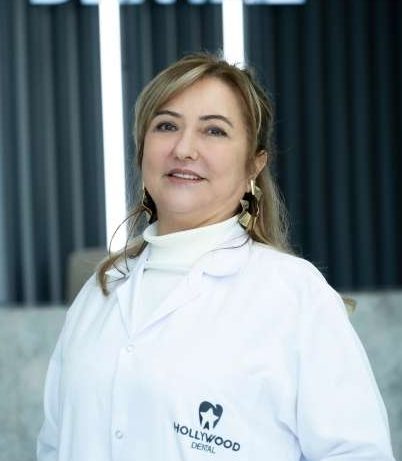
Dentist Handan Nohutcuoğlu graduated from Ege University Faculty of Dentistry in 1987. He has gained experience in various fields by working in many dental polyclinics throughout his career, combining his knowledge and experience. He continues to work at Hollywood Dental at the moment.


